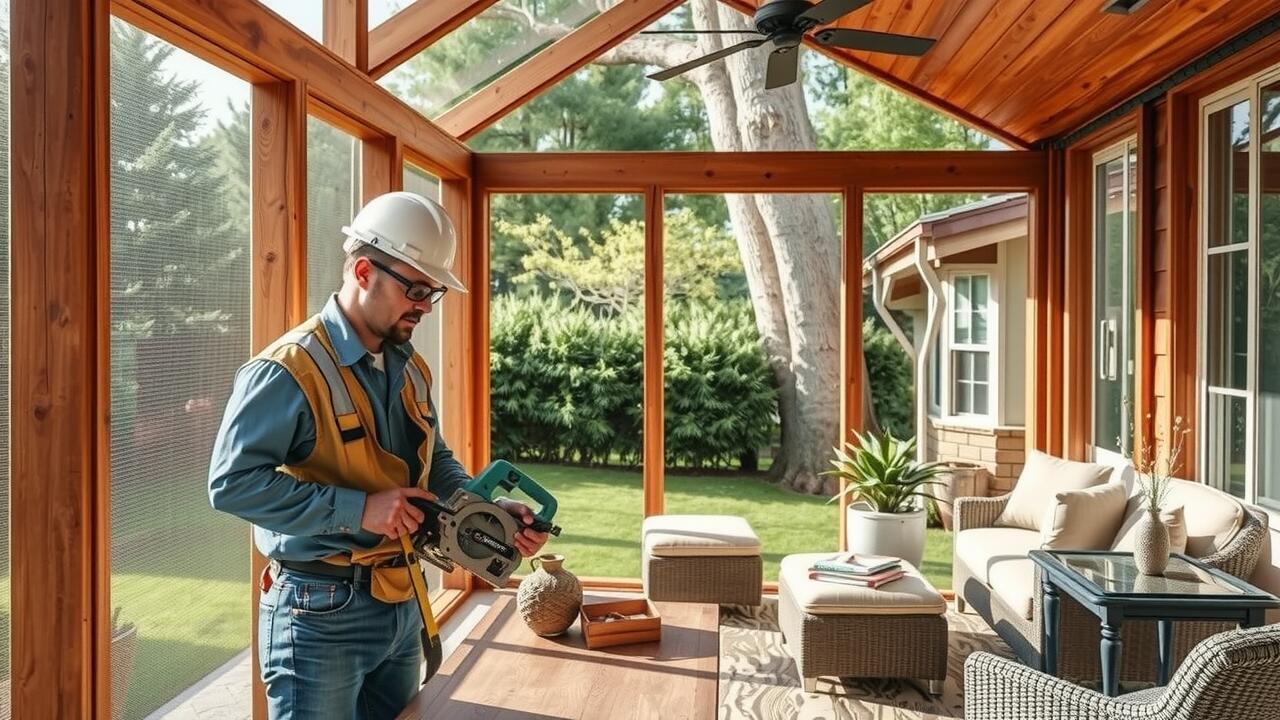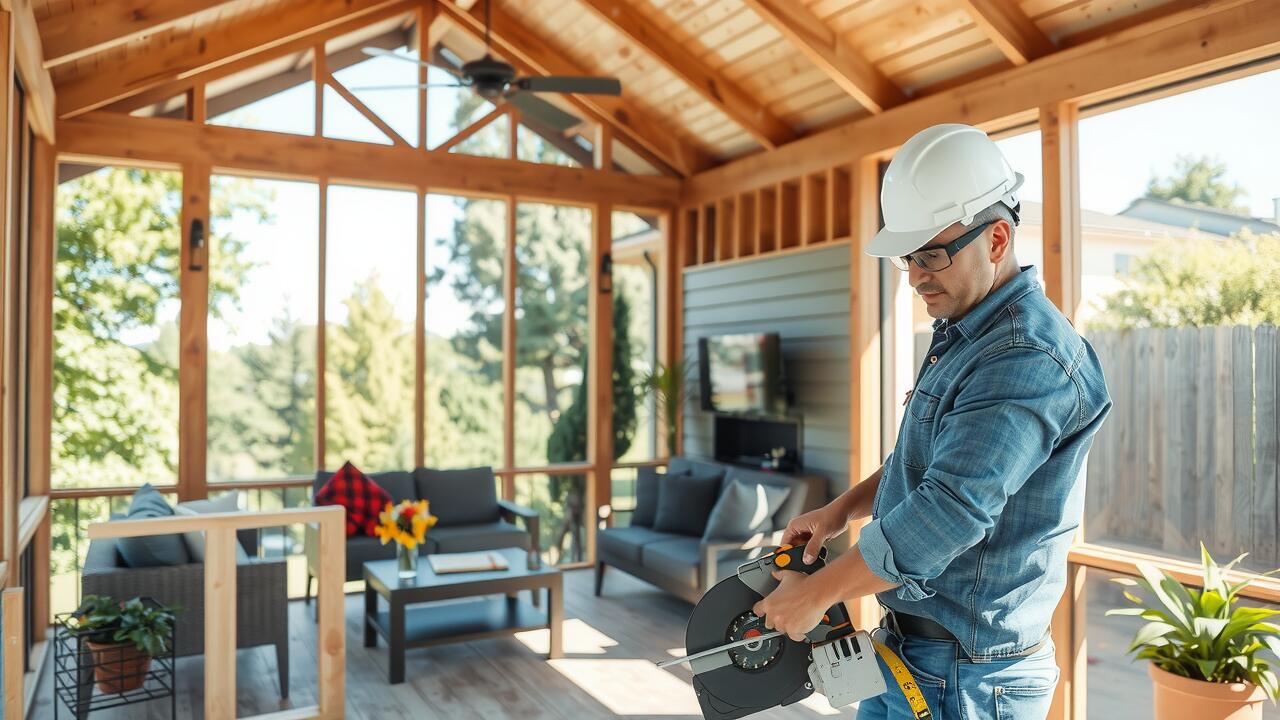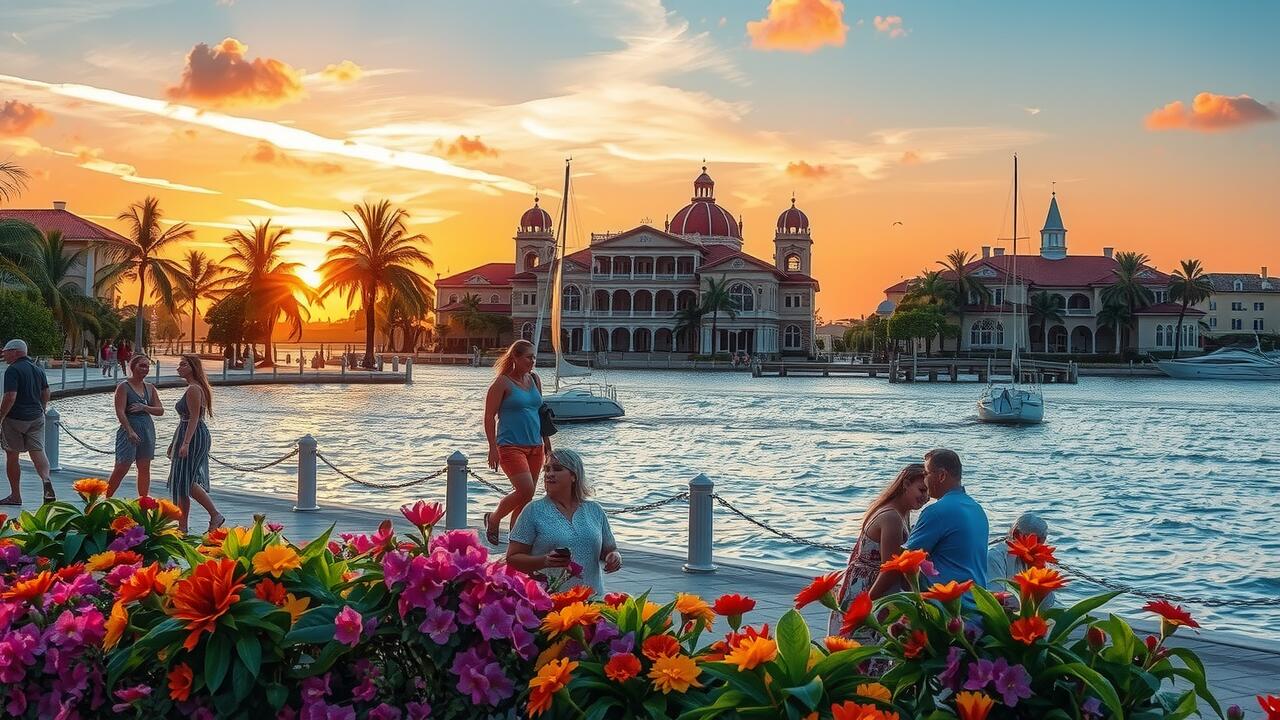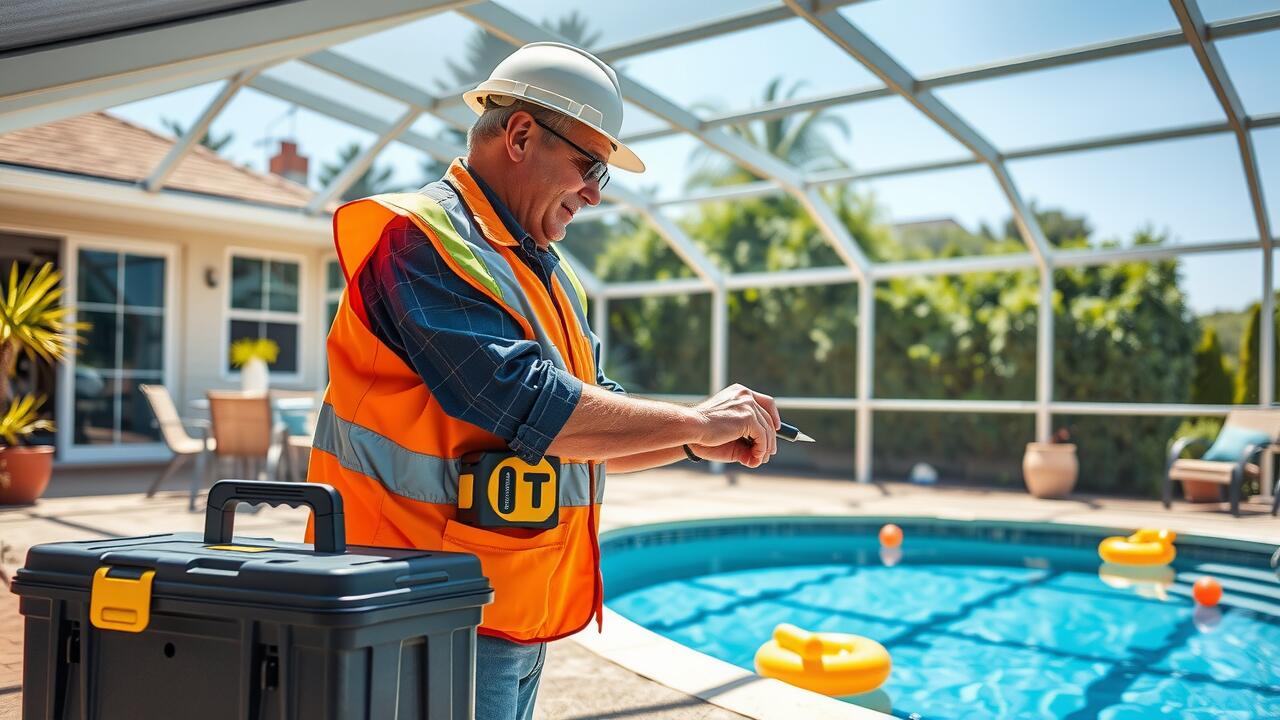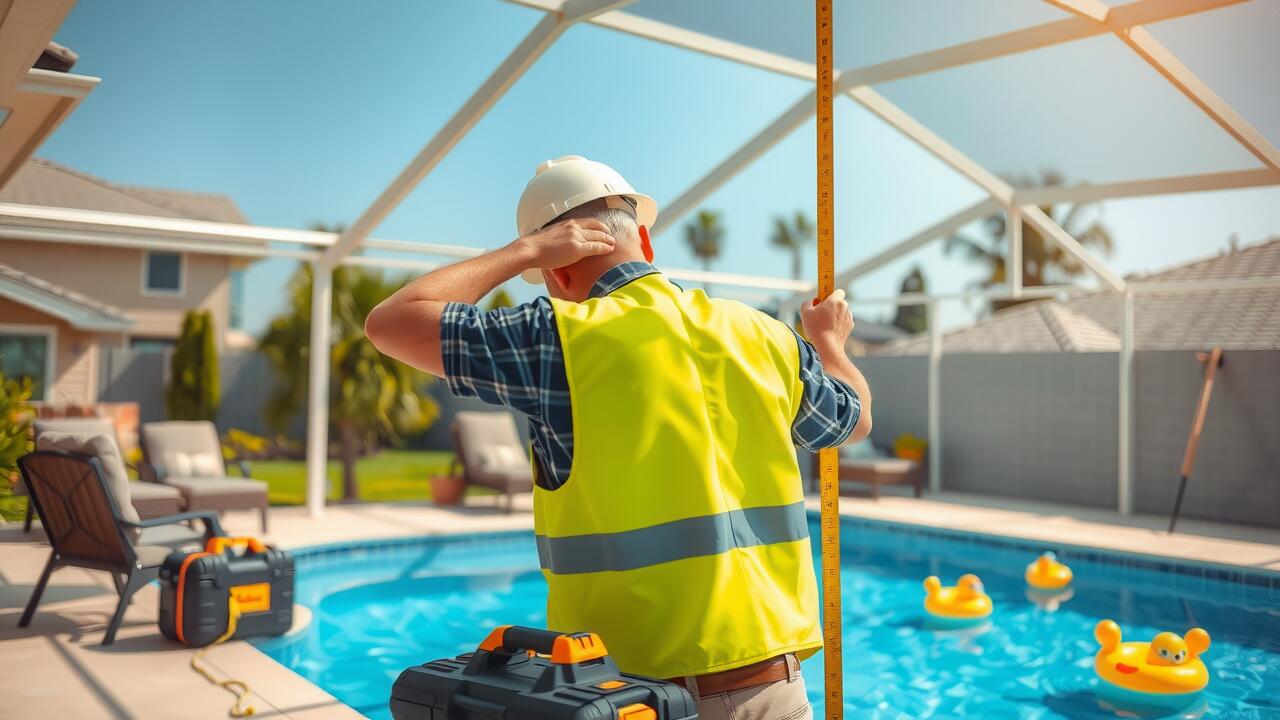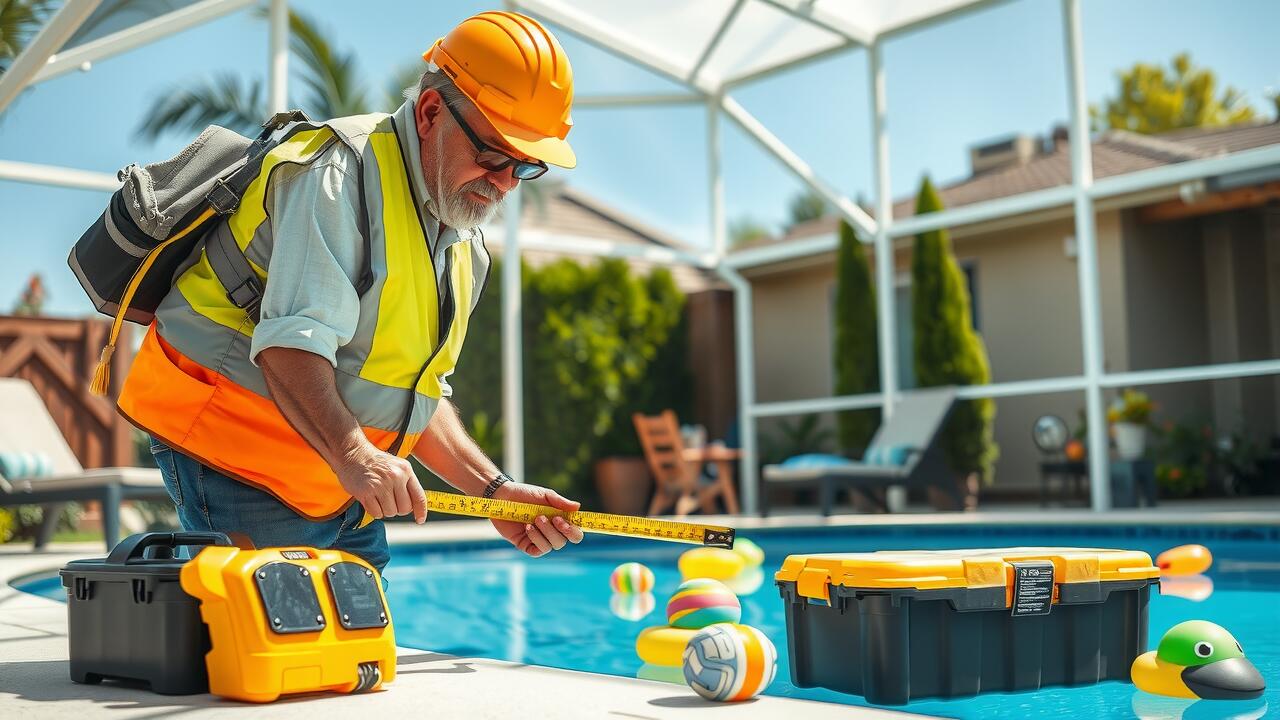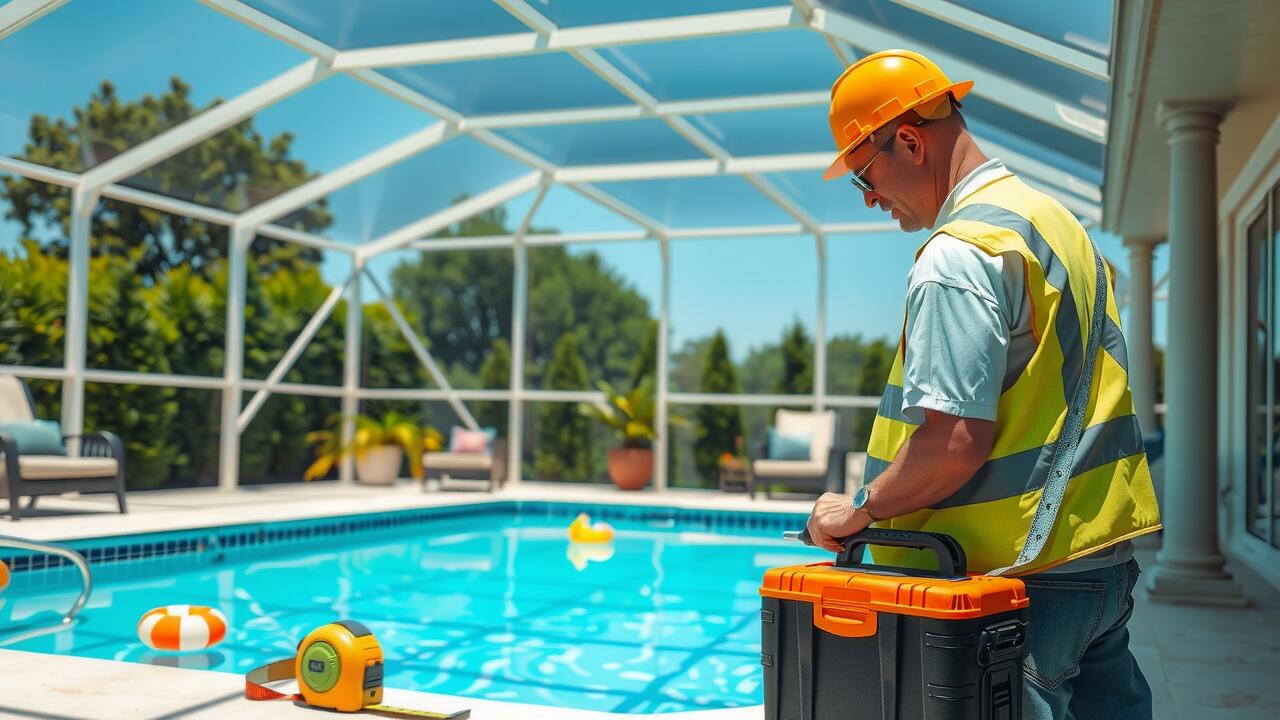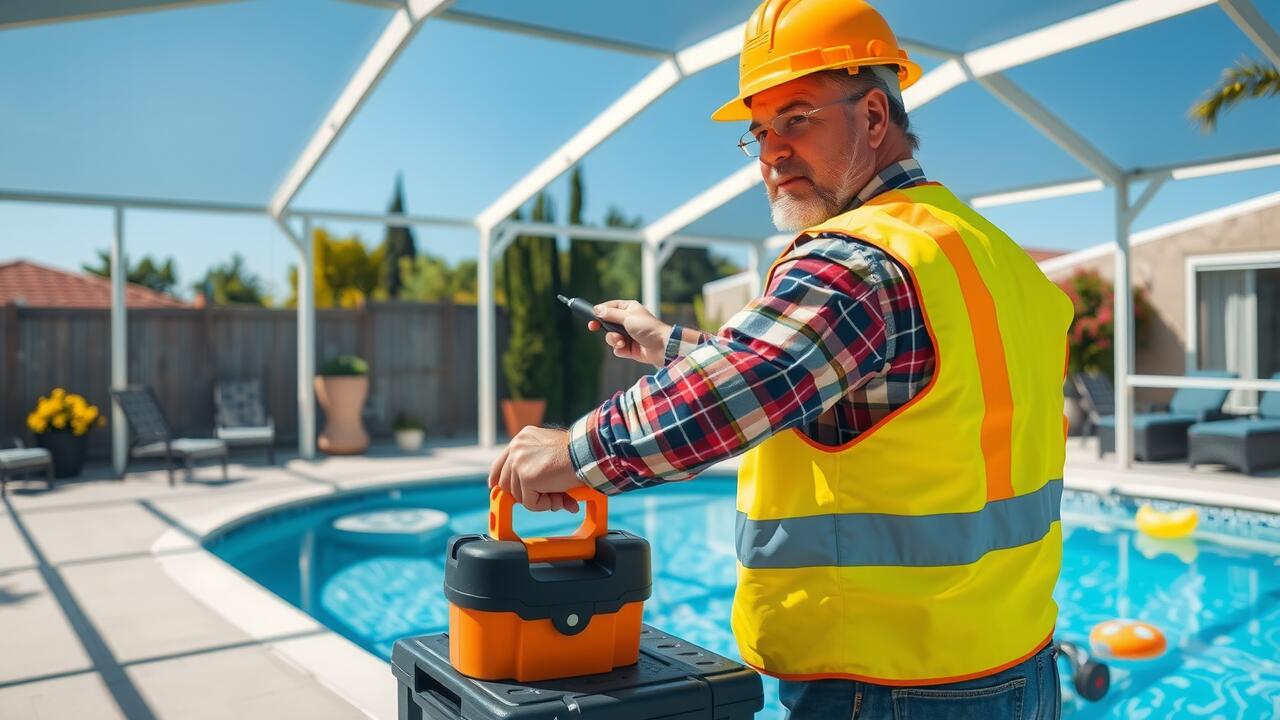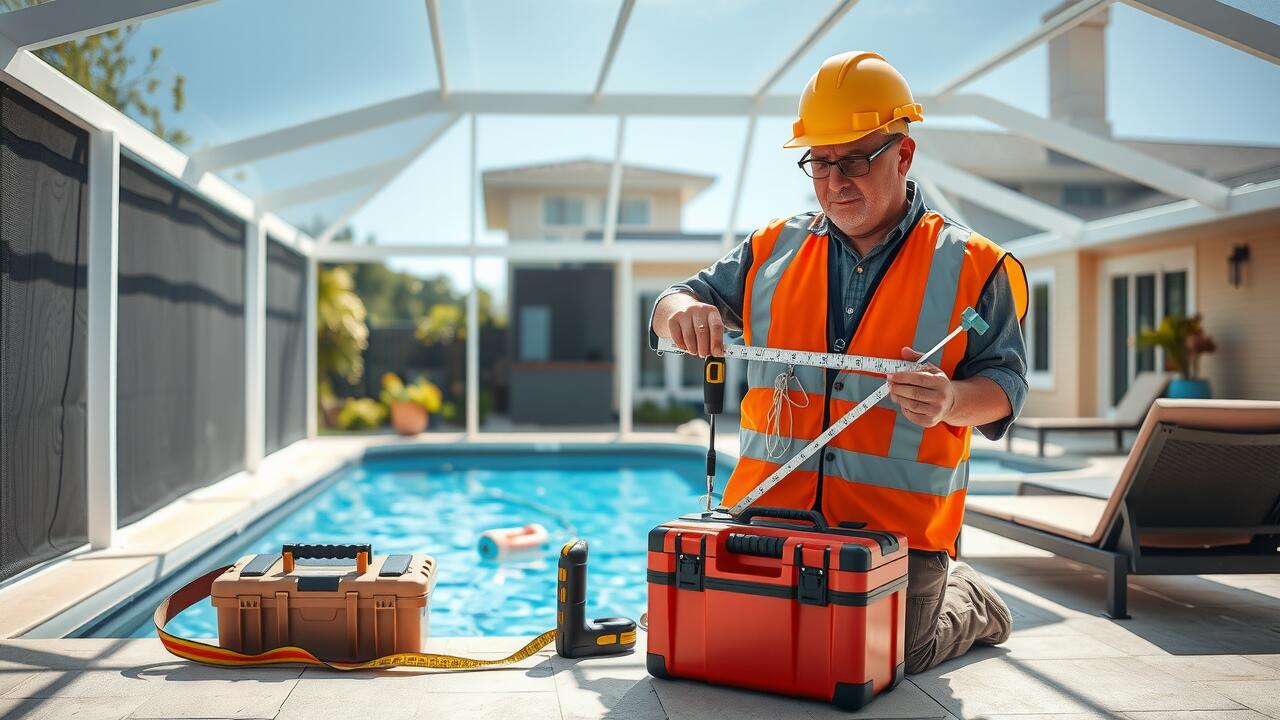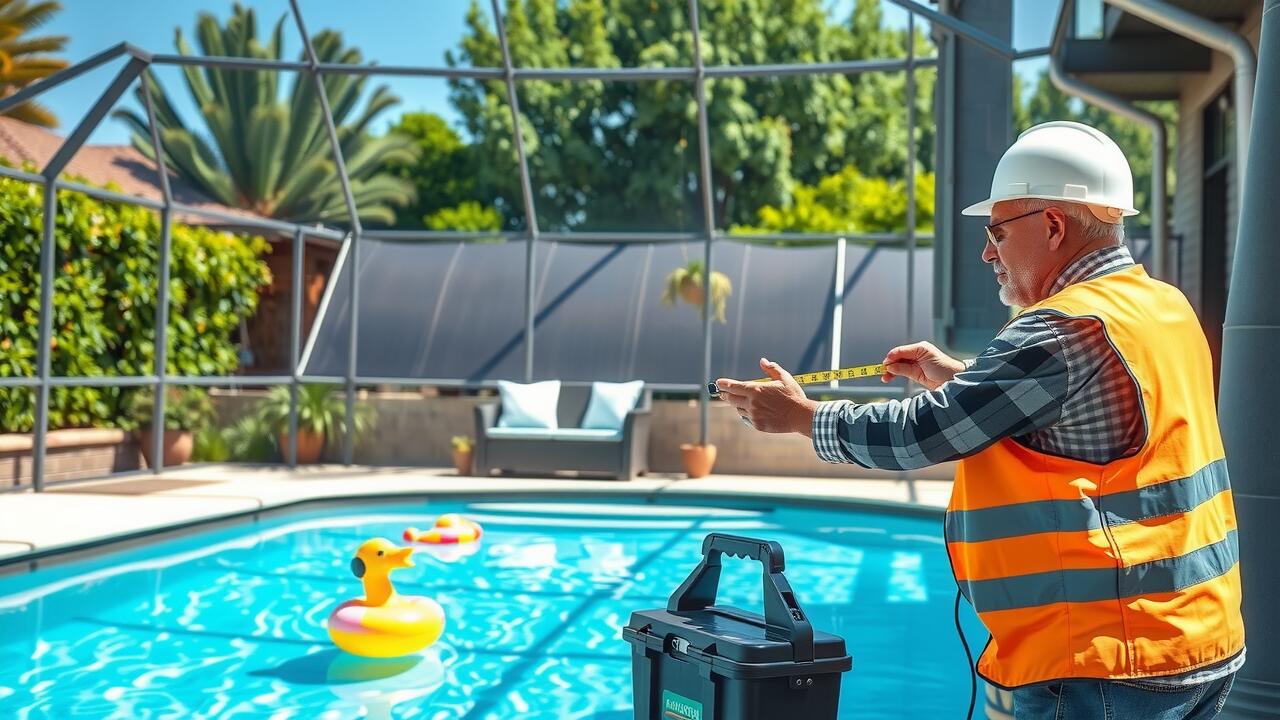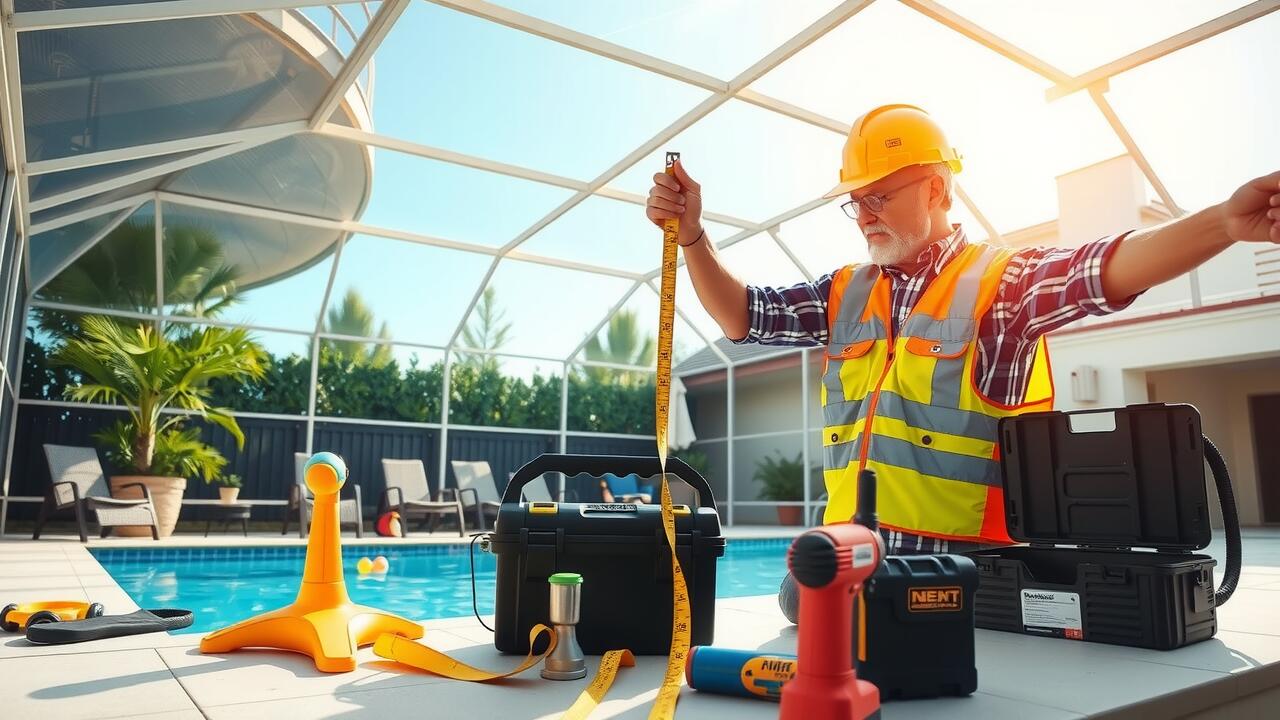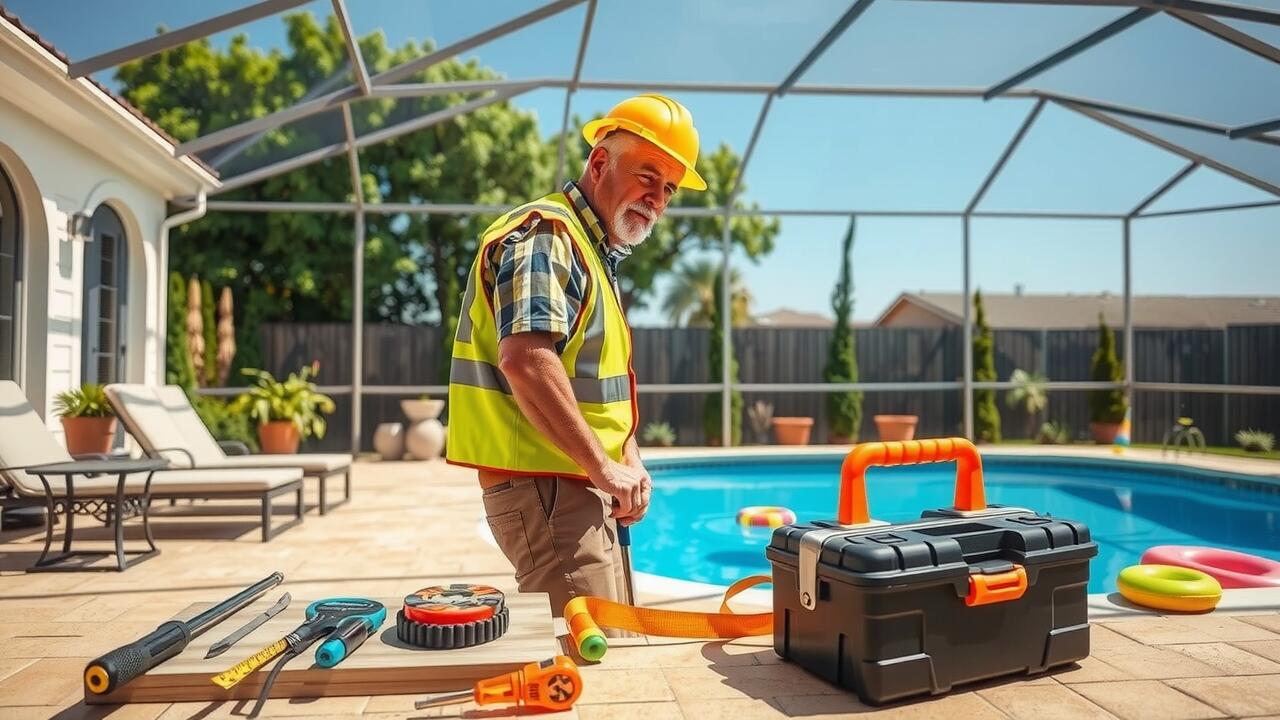Category: Uncategorized
Seasonal Pricing Trends
The cost of building a screened-in porch can vary significantly depending on the season. Typically, spring and summer are peak times for construction projects, leading to higher labor and material costs. Many homeowners prefer to enjoy their new outdoor space during warmer months, which creates a surge in demand for contractors. As a result, prices may increase as suppliers and laborers respond to the heightened activity in the home improvement sector.
Conversely, fall and winter often see a decrease in construction activity, which can result in lower prices for screened-in porches. Homeowners who choose to build during these off-peak seasons may find better deals, as contractors may offer incentives or reduced rates to fill their schedules. Additionally, materials may be less expensive due to lower demand. Timing the construction can greatly impact the overall budget, making seasonal trends an important consideration for prospective buyers.
Best Times to Build
The timing of a screened-in porch installation can significantly affect both the cost and the overall process. Spring and early summer often stand out as the most popular times for such projects. Homeowners are eager to enjoy their outdoor spaces as the weather warms up. Scheduling construction during these months can lead to increased demand, which may drive up prices. However, it’s essential to consider that the moderate temperatures and lower chances of precipitation can facilitate smoother building conditions.
On the other hand, fall can present unique advantages for those looking to build a screened-in porch. Contractors may experience a lull in their schedules as interest shifts back to indoor projects. This shift can result in more competitive pricing and availability. Additionally, constructing during the fall allows homeowners to enjoy their new space as they prepare for winter gatherings. Careful planning around seasonal changes can ensure that a screened-in porch not only fits within budget but also aligns with the intended usage.
Permits and Regulations
Before embarking on the construction of a screened-in porch, it is crucial to understand local building codes and permit requirements. Different municipalities have varying regulations regarding the size, structure, and placement of outdoor additions. Often, homeowners are required to obtain a building permit, especially for projects that involve electrical work or major structural changes. Failing to secure these permits can lead to costly fines or the need to modify or remove the structure altogether.
In addition to permits, homeowners should also consider zoning regulations and any homeowner association (HOA) rules that may apply. These regulations can dictate design elements, setbacks, and height limitations for a screened-in porch. Being aware of these rules early in the planning process can help avoid delays and additional expenses during construction. Evaluating all necessary permits and regulations will ensure a smoother building experience and contribute to the overall budget.
How They Influence Budgeting
Permits and regulations can significantly impact the budgeting process for a screened-in porch. Homeowners should be aware of local codes that might dictate the design and construction methods. Failing to secure the proper permits can lead to fines or the need for costly redesigns, making it essential to factor in these potential expenses early in the planning stages. Local zoning laws might also influence the size and placement of the porch, further affecting overall costs.
Understanding these legal requirements enables homeowners to estimate a more accurate budget. It’s advisable to consult with local building authorities or experience contractors to ensure compliance and avoid unexpected costs. While investing time and effort into navigating these regulations may seem tedious, it can prevent financial burdens down the road and contribute to a smoother construction process for the screened-in porch.
Maintenance Costs After Installation
Maintenance costs after the installation of a screened-in porch can vary widely based on several factors. Regular cleaning is essential to maintain the appearance and function of the structure. This includes washing the screens to remove dust and debris, as well as inspecting and maintaining the framing and flooring materials to prevent deterioration. Depending on the materials used, such as wood or composite, additional costs might arise for periodic sealing or staining.
Long-term financial considerations also play a role in budgeting for maintenance. Homeowners should expect to allocate funds yearly for minor repairs, particularly if the porch is used frequently or exposed to harsh weather conditions. Investing in quality materials during the initial build can reduce future expenditures, leading to a more durable and low-maintenance screened-in porch. Regular inspections can help identify potential issues early, ultimately saving money on more extensive repairs later.
Long-Term Financial Considerations
A screened-in porch can enhance the value of a home while providing a tranquil outdoor space. As a long-term investment, it often appreciates in value, attracting potential buyers who seek versatile living areas. Homeowners can enjoy the benefits of additional square footage without the burden of traditional outdoor maintenance. Regular upkeep, including cleaning screens and addressing minor repairs, typically requires minimal investment, making it a cost-effective feature over the years.
Additionally, the energy efficiency of a screened-in porch can contribute to long-term savings. By creating a buffer against the elements, the porch can help regulate temperatures in adjacent indoor spaces, potentially lowering heating and cooling costs. This reduction in energy expenditure can add further financial benefits, making the initial construction cost more justifiable. Overall, a screened-in porch serves not only as a source of aesthetic enjoyment but also as a savvy financial addition to any property.
FAQS
What is the average cost of building a screened-in porch?
The average cost of building a screened-in porch typically ranges from $15 to $30 per square foot, depending on materials, design, and location.
Are there seasonal trends that affect the pricing of screened-in porches?
Yes, pricing can fluctuate based on seasonal demand, with spring and summer usually being the busiest times for construction, often leading to higher costs.
Do I need a permit to build a screened-in porch?
In most cases, yes, building a screened-in porch requires a permit. It’s important to check local regulations, as they can vary by location.
What are some long-term costs associated with maintaining a screened-in porch?
Long-term maintenance costs may include repairs, replacement of screens, cleaning, and potential upgrades to furniture or fixtures, so budgeting for these expenses is advisable.
How can I save money when building a screened-in porch?
To save money, consider building during the off-season, choosing less expensive materials, or opting for a simpler design that requires less labor.
Fort Myers Beach
A trip to Fort Myers Beach promises beautiful sandy shores and vibrant sunsets. The beach stretches for miles, offering ample space for sunbathing, swimming, and beachcombing. Visitors often engage in water sports, including kayaking and paddleboarding. Nearby, dining and shopping options abound, allowing for a full day of enjoyment with local eateries serving seafood and tropical drinks.
The area is family-friendly, making it an ideal destination for all ages. Children can enjoy building sandcastles or playing in the gentle surf while adults relax under umbrellas. Wildlife enthusiasts can also spot dolphins and various bird species along the shoreline. Events frequently take place on the beach, including festivals and live music, further enhancing the lively atmosphere.
Fort Myers Beach
Six Mile Cypress Slough Preserve
This expansive wetlands area offers visitors a unique glimpse into the diverse ecosystems of southwest Florida. A network of boardwalks and trails meanders through the lush cypress swamp, allowing for easy exploration and observation of the local flora and fauna. Birdwatchers will find an abundance of species, from great egrets to herons, making it a popular destination for photography and nature enthusiasts.
The preserve is not only a sanctuary for wildlife but also plays a crucial role in environmental education. Guided tours and programs provide insights into the importance of wetland conservation and the delicate balance of nature. Families can enjoy a day out in the fresh air while learning about the rich biodiversity that thrives in this remarkable habitat.
Six Mile Cypress Slough Preserve
Manatee Park
Situated along the warm waters of the Caloosahatchee River, this park is a perfect destination for both wildlife enthusiasts and families. It offers an excellent chance to observe the gentle giants of the sea, especially during the winter months when manatees congregate in the warmer waters. Visitors can take advantage of the viewing areas and boardwalks that provide unobstructed views of these fascinating creatures as they float lazily close to the surface.
The park features a variety of educational displays and informative signs that help guests learn more about the unique ecology of the region. In addition to manatees, you might also spot numerous bird species, turtles, and other local wildlife. The picnic areas provide a lovely setting for a leisurely lunch while enjoying the sights and sounds of nature. Exploratory trails meander through the lush landscapes, making it a great place for a relaxed stroll or a family outing.
Manatee Park
Calusa Nature Center and Planetarium
Visitors can explore the wonders of nature and astronomy at this popular destination. The center features a variety of exhibits showcasing the local ecosystem. Guests will have the opportunity to see native animals, including birds, reptiles, and small mammals. Walking trails meander through the lush grounds, providing an immersive experience in the region’s flora and fauna.
The planetarium offers fascinating shows that delve into the mysteries of the universe. These programs cater to all ages, combining entertainment with education. Engaging presentations spark interest in astronomy and help visitors understand celestial phenomena. Families can enjoy interactive displays and learn about the importance of conservation through hands-on activities.
Calusa Nature Center and Planetarium
FAQS
What are the best activities to enjoy at Fort Myers Beach?
At Fort Myers Beach, visitors can enjoy sunbathing, swimming, water sports like jet skiing and paddleboarding, beachcombing, and dining at local seafood restaurants. The beach is also great for sunset watching and family-friendly activities.
What can I expect to see at Six Mile Cypress Slough Preserve?
At Six Mile Cypress Slough Preserve, you can expect to see a diverse range of wildlife, including alligators, birds, and turtles. The preserve features walking trails and boardwalks that allow visitors to explore the beautiful wetlands and learn about the local ecosystem.
Is Manatee Park a good place for families?
Yes, Manatee Park is an excellent destination for families. It offers opportunities to view manatees in their natural habitat, especially during the winter months. The park also has picnic areas, a playground, and educational programs that are engaging for children.
What kind of exhibits can I find at the Calusa Nature Center and Planetarium?
The Calusa Nature Center and Planetarium features exhibits on local wildlife, ecosystems, and the history of the Calusa Indians. Additionally, the planetarium offers shows about astronomy, making it a great educational experience for visitors of all ages.
What is the best time of year to visit Fort Myers, Florida?
The best time to visit Fort Myers is during the winter months, from December to April, when the weather is mild and comfortable. This is also considered the peak tourist season, so it’s advisable to book accommodations in advance.
Discounts and Sales on Pool Enclosure Products
Finding discounts and sales on pool enclosure products can lead to significant savings. Many retailers offer seasonal promotions, especially during the spring and summer months when pool installations are most popular. Keeping an eye on local home improvement stores and online marketplaces can yield better prices. Some brands also have clearance sections where leftover stock from previous seasons is sold at reduced rates.
In addition to traditional retailers, online platforms often provide opportunities for discounted pool enclosures. Websites that specialize in outdoor living or home improvement may feature sales events or coupon codes. Subscribing to newsletters from these companies can grant early access to promotions. Social media pages can also highlight flash sales or exclusive online discounts, making them a valuable resource for budget-conscious shoppers.
Where to Find Affordable Pool Fencing Deals
Exploring various options for affordable pool fencing can lead to significant savings. Local hardware stores often carry seasonal promotions on pool enclosures, especially during spring and summer. Additionally, many online retailers offer competitive pricing, along with special discounts or coupon codes. Comparing prices between local shops and online marketplaces can help identify the best deals.
Another effective strategy is to keep an eye on community bulletin boards and websites like Craigslist or Facebook Marketplace. Homeowners frequently sell their used pool enclosures at a fraction of the original cost. Neighborhood exchange groups may also provide leads on discounted or salvaged fencing materials, offering an economical way to meet safety requirements while enhancing the pool area.
Using Plants as Natural Barriers
Using plants as natural barriers can be an effective and aesthetically pleasing way to enclose a pool. Not only do they provide privacy, but they also enhance the overall landscape of the area. Choosing the right types of greenery is essential for creating a robust barrier. Dense shrubs and tall grasses work well to create a visual shield while adding a touch of nature to the environment. Incorporating flowering plants can further soften the appearance of the enclosure, providing beauty alongside functionality.
When selecting plants, consider both their height and growth habits. Fast-growing varieties can quickly fill in gaps, while evergreen plants ensure year-round privacy. Native plants often require less maintenance and adapt better to local conditions. This approach can be a cost-effective alternative to traditional pool enclosures, offering a natural look that complements outdoor spaces. Furthermore, using plants as a barrier fosters an eco-friendly atmosphere that enhances wildlife habitats and promotes biodiversity.
Best Plant Options for Pool Privacy
Creating a natural barrier around your pool not only enhances privacy but also adds beauty to your outdoor space. Dense shrubbery, such as arborvitae or privet, can provide a thick, green wall that shields the pool area from prying eyes. These plants grow quickly and can reach significant heights, making them effective options for pool enclosures. Additionally, incorporating flowering plants like hibiscus or bougainvillea can create a vibrant, lush atmosphere while serving the dual purpose of privacy.
Bamboo is another fantastic choice for pool privacy due to its rapid growth and tall stature. Specific varieties, such as black bamboo, offer a unique aesthetic while acting as a natural screen. Edible options like grapevines trained on trellises can also provide both privacy and delicious fruits. Choosing the right plants not only fosters a secluded retreat but complements the overall design of your pool enclosure, ensuring an inviting and serene environment.
Community Resources for Pool Safety
Local municipalities often have resources available for pool safety that can benefit homeowners. Many community centers and public health departments offer programs focused on educating residents about safe swimming practices and the importance of installing proper safety measures, such as Pool Enclosures. These workshops may provide valuable information on local regulations, potential financial assistance, and best practices for maintaining a secure environment around swimming pools.
In addition to educational resources, some communities have initiatives aimed at helping families finance necessary safety upgrades. Grants and subsidies may be available for purchasing Pool Enclosures or adding safety features to existing pools. Engaging with local non-profit organizations can also lead to discovering additional resources, which may include discounted materials or access to skilled volunteers willing to help with installation projects.
Finding Local Assistance Programs
Local assistance programs can be a valuable resource for homeowners seeking affordable options for pool enclosures. Many municipalities offer grants or low-interest loans to promote safety around backyard pools. These programs can significantly reduce the financial burden associated with installing proper fencing or barriers. Checking with local government offices or community safety organizations often provides information on available funding that can help make pool enclosures more accessible.
In addition to government resources, community organizations may host outreach initiatives focused on pool safety. These initiatives sometimes includes workshops or distribution of discounted materials for pool enclosures. Engaging with local nonprofits or neighborhood groups can connect homeowners with valuable information and resources. This approach allows families to create safer pool environments while minimizing costs.
FAQS
What are the most affordable options for enclosing a pool?
The most affordable options for enclosing a pool include using mesh fencing, installing a removable pool fence, or utilizing natural barriers like plants. Each of these options can provide safety and privacy without breaking the bank.
How can I find discounts on pool enclosure products?
Discounts on pool enclosure products can often be found at local hardware stores, online retailers, and during seasonal sales. Additionally, checking websites that specialize in pool safety equipment can also yield good deals.
What types of plants work best as natural barriers for pool privacy?
Some of the best plant options for pool privacy include tall hedges, bamboo, and fast-growing shrubs like arborvitae. These plants can create a natural enclosure while adding beauty to your pool area.
Are there community resources available to help with pool safety?
Yes, many communities offer resources such as local assistance programs, safety workshops, and grants for pool safety improvements. It’s a good idea to check with local government websites or neighborhood organizations for available options.
Can I install a pool fence myself to save money?
Yes, many pool fences are designed for easy DIY installation. Be sure to follow the manufacturer’s instructions carefully and check local regulations regarding pool safety to ensure compliance.
Pool Enclosure Regulations in Florida
Florida’s warm climate and abundant sunshine make pool ownership popular. However, local regulations dictate specific requirements regarding pool enclosures to enhance safety. These regulations aim to protect children and pets from accidental drownings. Additionally, enclosures help prevent unauthorized access and promote responsible pool usage.
Building codes in Florida outline the necessary specifications for pool enclosures, including height, materials, and accessibility features. Homeowners are encouraged to familiarize themselves with these guidelines. Compliance not only ensures safety but also safeguards property values. Pool enclosures can contribute positively to the overall aesthetics of a property while adhering to legal standards.
Understanding Local Building Codes
In Florida, local building codes play a crucial role in determining the specifics of pool enclosures. Each municipality may have its own set of requirements regarding the height, material, and design of these enclosures. Compliance with these regulations helps ensure safety and security, especially for families with children and pets. Homeowners must verify that their pool enclosures meet the necessary standards to avoid potential fines and ensure proper insurance coverage.
Understanding these codes is essential for anyone considering a pool enclosure installation. The regulations are often focused on preventing accidents and promoting responsible usage of pool areas. Additionally, these guidelines can help homeowners choose the right materials and styles that fit within local aesthetic norms. Being knowledgeable about local building codes not only aids in creating a safe environment but also enhances the overall value of the property.
Energy Efficiency and Pool Enclosures
Pool enclosures serve a significant purpose in enhancing the energy efficiency of swimming pools. They act as a barrier against the elements, limiting the exposure of the water to wind, rain, and debris. This containment reduces heating costs by maintaining water temperature, allowing pool owners to enjoy warmer water with less energy input. In sunny Florida, solar gain becomes more pronounced with enclosures, capturing and retaining heat from the sun throughout the day.
Moreover, the presence of pool enclosures minimizes water evaporation, a common issue faced by outdoor pools. Unprotected pools can lose significant amounts of water to evaporation, leading to increased refilling needs and higher water bills. With enclosures in place, the evaporation rate decreases considerably, contributing to overall water conservation. This efficiency not only saves on utility costs but also promotes a more sustainable use of resources, making enclosures an environmentally friendly option for pool owners.
Reducing Heating Costs and Water Evaporation
Pool enclosures play a crucial role in reducing heating costs by creating a greenhouse-like effect. This structure traps warmth from the sun and retains heat within the pool area, preventing significant heat loss during cooler evenings or chilly seasons. With less energy required to maintain optimal water temperatures, homeowners can enjoy substantial savings on their heating bills.
In addition to heating efficiency, pool enclosures significantly reduce water evaporation. The covering acts as a barrier, limiting exposure to wind and sunlight, which are the primary factors contributing to evaporation. This preservation of water not only helps maintain the pool’s water level but also reduces the frequency of refilling. Consequently, homeowners benefit from lower water costs and less chemical usage for maintaining pool balance.
Maintenance Advantages of Enclosed Pools
Pool enclosures provide significant benefits when it comes to maintenance. With a barrier in place, debris such as leaves, twigs, and insects is less likely to make its way into the pool. This can lead to a considerable reduction in cleaning time and the need for frequent skimming or vacuuming. Additionally, by limiting the access of the elements, pool enclosures help maintain a more stable water quality, reducing the frequency of chemical balancing required.
Another advantage of pool enclosures is the reduction in algae growth. Since sunlight is a primary factor in the proliferation of algae, limiting direct sunlight with an enclosure helps inhibit its development. This not only lessens the need for harsh chemicals to combat algae but also improves the overall clarity and cleanliness of the water. Overall, the installation of pool enclosures makes pool upkeep simpler and more efficient for owners.
Simplifying Cleaning and Upkeep
Pool enclosures significantly reduce the amount of debris that enters the pool. By providing a barrier against leaves, insects, and other outdoor elements, they minimize the frequency of cleaning. Pool owners appreciate the convenience of having to skim the surface and vacuum less often, allowing more time for leisure rather than maintenance. The enclosure creates a more controlled environment, which helps in keeping the water cleaner for longer periods.
In addition to less debris, pool enclosures can simplify routine maintenance tasks. Many designs offer easy access to the pool area, enabling quick cleaning of surrounding surfaces and the enclosure itself. With fewer contaminants entering the water, the overall chemical balance remains stable, resulting in lower maintenance costs. These benefits not only enhance the enjoyment of pool usage but also contribute to long-term savings for the homeowner.
FAQS
Why do Floridians enclose their pools?
Floridians enclose their pools primarily to comply with safety regulations, enhance energy efficiency, and simplify maintenance. Enclosures help prevent accidental drownings, reduce heating costs, and keep pools cleaner.
What are the regulations regarding pool enclosures in Florida?
Florida has specific building codes and regulations that require pool enclosures to ensure safety and compliance. These codes vary by locality, so it’s essential for homeowners to consult local building authorities for the exact requirements.
How do pool enclosures improve energy efficiency?
Pool enclosures create a barrier that helps retain heat, reducing heating costs and minimizing water evaporation. This can lead to lower energy bills and less frequent need for water refills.
What are the maintenance advantages of having an enclosed pool?
Enclosed pools require less frequent cleaning because debris like leaves and insects are kept out. This makes upkeep easier and can save time and effort for pool owners.
Do pool enclosures also provide benefits for landscaping?
Yes, pool enclosures can enhance landscaping by creating a more defined outdoor space. They can also reduce water loss from evaporation, benefiting nearby plants and gardens.
Climate Impact
Climate can significantly affect the usability and maintenance of outdoor swimming pools. Pool enclosures, such as domes, provide a protective barrier that mitigates the impact of various weather conditions. By shielding the pool from rain, debris, and wind, these structures help maintain water temperature and reduce evaporation rates. This insulation often allows for extended swimming seasons, enabling pool owners to enjoy their pools even during cooler months.
In addition to temperature regulation, pool enclosures also play a role in maintaining water quality. By keeping out leaves and other contaminants, these domes can lessen the reliance on chemicals and filtration systems. This not only reduces maintenance costs but also creates a more enjoyable swimming experience. Overall, pool enclosures offer an effective solution to counteract the challenges posed by changing climates.
How Weather Influences Effectiveness
Weather significantly affects the performance of pool enclosures. In colder climates, these structures provide much-needed insulation, keeping the pool water warmer and extending the swimming season. During hot summer months, pool enclosures can offer relief from harsh direct sunlight, creating a more comfortable environment for swimmers. However, the effectiveness of these installations can vary based on the materials used and the quality of the construction.
Rain and wind can also impact the usability of pool enclosures. Heavy rain can lead to water accumulation that requires drainage solutions, while strong winds may challenge the stability of the structure. Additionally, snow accumulation in colder regions can pose risks if the dome is not designed to handle such weight. Owners should consider local weather patterns when evaluating the overall effectiveness of pool enclosures.
Safety Features
Pool enclosures provide a critical layer of safety for swimmers and non-swimmers alike. These structures offer a protective barrier that reduces the risk of accidental falls or unwanted access to the pool area. The solid design often includes locking mechanisms that prevent children and pets from entering the pool unsupervised. Many enclosures are also constructed with materials that can withstand severe weather, ensuring that safety is maintained year-round.
In addition to preventing accidents, pool enclosures can also shield swimmers from environmental hazards such as falling debris or pests. These barriers can keep out insects and other wildlife that might otherwise find their way into the pool, enhancing the overall enjoyment of the swimming area. The added peace of mind allows families to relax and savor their time in the water without constantly worrying about potential hazards around them.
Ensuring Protection for Swimmers
Pool enclosures provide a significant layer of safety for swimmers, especially in residential settings. By creating a physical barrier, these structures prevent unauthorized access to the pool area. This is especially important for families with young children or pets, as it minimizes the risk of accidental drownings. Additionally, pool enclosures can help keep out debris and animals, ensuring a clean and safe swimming environment.
Incorporating safety features into the design of pool enclosures further enhances their protective capabilities. Many enclosures come equipped with lockable doors and sturdy materials that resist breaking. This ensures that the area remains secure even when not in use. The presence of these safety features fosters peace of mind for homeowners and encourages responsible supervision during swimming activities.
Aesthetic Appeal
Pool enclosures can significantly enhance the overall aesthetic of a backyard, creating a visually appealing focal point. The transparent or semi-transparent materials often used in these structures allow for natural light to filter through, illuminating the pool area while still maintaining a barrier from outdoor elements. Different styles and designs are available, enabling homeowners to choose an enclosure that complements the existing architecture of their home and harmonizes with the surrounding landscape.
Beyond functionality, pool enclosures contribute to a cohesive outdoor environment. They can be customized with various finishes, colors, and features such as integrated lighting or decorative elements. This aesthetic consideration transforms the pool area into an inviting space for relaxation and entertainment, making it more than just a swimming area. Investing in a pool dome can result in a blend of practicality and beauty, effectively elevating the charm of any backyard.
Enhancing Your Backyard Space
Pool enclosures can significantly enhance the aesthetic appeal of any backyard. They create a defined space that blends structure with nature. The transparent materials used in these domes allow natural light to filter through, maintaining an open feel while reducing the visibility of the pool from the outside. This can give homeowners a sense of privacy, allowing them to enjoy their swimming experience without the distractions of the outside world.
Incorporating a pool dome also allows for greater creativity in landscape design. Homeowners can develop themed outdoor spaces that complement the enclosure. Incorporating plants and decorative features around the pool area can enhance the overall look. With a pool enclosure in place, the focus shifts to creating a cohesive environment that invites relaxation and enjoyment.
FAQS
What are pool domes, and how do they work?
Pool domes are inflatable or rigid structures that cover swimming pools, creating a controlled environment. They help maintain water temperature, protect the pool from debris, and extend the swimming season by shielding the pool from adverse weather conditions.
How does the climate impact the effectiveness of pool domes?
Climate plays a significant role in the effectiveness of pool domes. In colder climates, they can help retain heat and prevent water evaporation, while in warmer areas, they can provide shade and reduce water temperature. The local weather patterns will influence how beneficial a pool dome can be for your swimming pool.
What safety features should I look for in a pool dome?
When considering a pool dome, look for features such as sturdy construction, easy access points, and safety mesh to prevent accidental entry. Additionally, ensure that the dome can withstand strong winds and other environmental factors to ensure the safety of swimmers.
Can a pool dome enhance the aesthetic appeal of my backyard?
Yes, pool domes can enhance the visual appeal of your backyard. They come in various designs and colors, allowing you to choose one that complements your outdoor space. A well-designed dome can add a unique and sophisticated look to your pool area.
Are pool domes easy to set up and maintain?
Most pool domes are designed for easy setup and maintenance. Inflatable domes typically require a pump for inflation, while rigid structures may need some assembly. Maintenance usually involves regular cleaning and checking for wear and tear, but overall, they are manageable for most homeowners.
Maintenance Expenses
Maintenance expenses associated with pool enclosures can vary depending on the materials used and the environmental conditions in which they are installed. Regular cleaning is essential to keep the enclosure looking its best and functioning properly. For screen enclosures, this often involves washing the screens and frames to prevent buildup from debris and mold. Glass enclosures may require a different approach, with routine glass cleaning needed to maintain clarity and prevent staining.
In addition to general cleaning, routine inspections are crucial for identifying wear and tear. Screen damage can lead to costly repairs if not addressed promptly. Glass may require resealing or repairs due to weather-related stress. Budgeting for these maintenance tasks is vital to ensure the longevity of pool enclosures and enhance their overall functionality. Understanding these ongoing costs helps homeowners make informed decisions regarding their pool investment.
Long-Term Costs of Upkeep
Long-term upkeep of pool enclosures demands consideration of various factors that contribute to their overall cost. Regular maintenance is essential to preserve the integrity and functionality of the enclosure. This can include routine cleaning, inspections for wear and tear, and repairs, all of which accumulate over time. The materials used in the pool enclosure can influence these costs, as some materials are more durable than others and may require less frequent maintenance.
Additionally, environmental factors play a significant role in the longevity of pool enclosures. Areas with extreme weather conditions, such as heavy storms or intense sun exposure, may accelerate wear. Over time, these external elements can necessitate more extensive repairs or even replacements of certain components. Homeowners must budget for these long-term costs, ensuring that their investment in a pool enclosure remains sound and beneficial throughout its lifespan.
Comparing Different Enclosure Types
Pool enclosures come in various types, each offering unique advantages and drawbacks. Screen enclosures are popular for their cost-effectiveness and ventilation. They provide a barrier against pests while allowing fresh air to circulate. These enclosures can be less expensive to install but may require more frequent maintenance due to wear from weather exposure. On the other hand, glass enclosures present a more upscale option, providing unobstructed views of the surroundings. They offer better durability and require less maintenance over time compared to screen options.
Choosing the right type of pool enclosure often depends on individual preferences and climate considerations. Screen enclosures allow for an open feel, making them suitable for warmer climates where ventilation is essential. Glass enclosures can offer better heat retention and protection against the elements, making them ideal for regions with fluctuating temperatures. Evaluating factors such as budget, aesthetic preferences, and intended use is crucial when selecting the most suitable pool enclosure type for your home.
Pros and Cons of Screen vs. Glass Enclosures
Screen enclosures offer affordability and versatility, making them a popular choice among pool owners. Their primary advantage is the ability to provide protection from insects and debris while allowing airflow and natural light. This feature enhances the swimming experience while keeping maintenance manageable. However, screen enclosures may not offer the same durability as glass options. Over time, screens can develop tears or wear out, requiring repairs or replacements that could add to the overall cost.
Glass enclosures present a premium option for pool enclosures, providing an unobstructed view of the surroundings and enhanced aesthetic appeal. They create a more enclosed and controlled environment, effectively blocking wind and debris and providing additional climate control. Despite these benefits, glass enclosures can be significantly more expensive to install and maintain. Additionally, they may require frequent cleaning to ensure clarity, which can be a consideration for homeowners looking for lower upkeep.
Additional Features and Add-ons
When considering pool enclosures, various additional features can enhance both functionality and aesthetics. Options such as automatic screens, lighting systems, and climate control can add to the overall experience of using the pool. These features cater to different needs, from providing more comfort during cooler months to enhancing safety with automatic closing mechanisms. However, incorporating these extras will significantly influence the final cost of the enclosure.
In addition to functional enhancements, decorative elements like custom lighting or integrated sound systems can transform the pool area into a more inviting and enjoyable space. Some homeowners may choose to add built-in benches or planters, which can increase the charm of their pool environment. While these additions might elevate the overall price, they often contribute to a more personalized and luxurious experience, making the investment worthwhile for many pool owners.
Enhancements That Can Increase Cost
Adding enhancements to pool enclosures can significantly raise the overall expense. Features such as heating systems, automatic covers, or integrated lighting can contribute to higher installation and maintenance costs. These upgrades not only improve functionality but also enhance the aesthetic appeal of the enclosure, making it a more inviting space for relaxation and entertainment. When considering enhancements, it’s essential to evaluate how much value they add to your pool experience against their added costs.
Moreover, customizations like additional ventilation, sliding doors, or decorative elements can also inflate the budget. Opting for tempered glass panels instead of standard screens is a common choice, as they provide a more polished look and superior durability. However, this upgrade may come with a significant price tag. Homeowners should weigh the long-term benefits and possible increases in enjoyment against the initial investment required for these enhancements to their pool enclosures.
FAQS
What is the average cost of a pool enclosure?
The average cost of a pool enclosure can range from $5,000 to $15,000, depending on the type, size, and materials used.
What factors affect the cost of pool enclosures?
Factors that affect the cost include the type of enclosure (screen, glass, or vinyl), its size, design complexity, and additional features like heating and ventilation systems.
Are there ongoing maintenance costs for pool enclosures?
Yes, ongoing maintenance costs can include cleaning, repairs, and occasional replacements of screens or glass, which may range from $200 to $800 annually.
What are the pros and cons of screen versus glass enclosures?
Screen enclosures are generally less expensive and provide good airflow, but they may not offer the same level of protection from the elements as glass enclosures, which are more durable but can be costlier.
Can additional features influence the overall cost of a pool enclosure?
Yes, enhancements such as lighting, heating, and automated systems can significantly increase the overall cost of a pool enclosure, often adding several thousand dollars to the total expense.
Manufacturer Warranties
Manufacturer warranties play a crucial role in determining the lifespan of pool enclosures. These warranties often outline the expected durability of the materials used, along with the conditions under which they remain valid. Typically, warranties span anywhere from a few years to several decades, depending on the manufacturer and the specific product line. It’s important to carefully review the terms, as they can include various clauses related to maintenance, installation, and environmental factors that may affect the enclosure’s longevity.
In addition to the duration, certain aspects are covered under these warranties. Most commonly, they include defects in materials and workmanship. Some warranties might extend to specific components like screens, frames, and hardware. Understanding what exactly is covered can help homeowners make informed decisions about maintenance and repairs. Knowing the details of the warranty can also provide peace of mind, ensuring that if issues arise, there is a clear path for resolution.
What Warranties Cover
Manufacturer warranties for pool enclosures typically cover various aspects of the product, focusing on structural integrity and workmanship. Gaps in coverage may exist, particularly regarding wear and tear caused by environmental factors such as extreme weather conditions. It’s essential for homeowners to read through the warranty documents carefully to understand what is included and any limitations or exclusions that may apply to their specific situation.
In many cases, warranties will also cover defects in the materials used. This includes issues with screens, frames, and hardware that may arise within the warranty period. Some manufacturers may offer extended warranties or additional coverage options for pool enclosures, allowing homeowners peace of mind regarding potential repairs and maintenance. Knowing what is covered can help in making informed decisions about care and any necessary repairs over time.
Common Signs of Wear
Pool enclosures can show various signs of wear over time, reflecting their exposure to weather conditions and regular use. One of the most noticeable indicators is physical damage to the screens or panels, which may develop tears, holes, or discoloration. Rust or corrosion may appear on metal components, particularly if the enclosure is near saltwater or in a humid environment. Checking the frame for any warping or bending is also essential, as these changes can compromise the structural integrity of the enclosure.
Another common sign is difficulty in operation. If sliding doors or panels become stiff or difficult to open, it may indicate that hinges or tracks are wearing out. Additionally, a buildup of debris or dirt that cannot be easily cleaned may signal that the enclosure is no longer functioning as intended. Regularly examining these aspects can help maintain the efficiency and appearance of pool enclosures, prolonging their lifespan.
Identifying Damage Early
Regular inspections of pool enclosures are essential to maintain their integrity and functionality. Look for signs of wear and tear, such as cracks, rust, or sagging. These issues can compromise the overall structure, leading to more significant problems down the line. Checking the seals and connections can also help in identifying potential water or air leaks that may weaken the enclosure further.
Timely detection of damage allows for prompt repairs, preventing minor concerns from escalating into costly fixes. Pay special attention to areas that experience frequent exposure to sunlight or harsh weather, as these conditions can accelerate deterioration. Maintaining vigilance will ensure that pool enclosures remain a safe and protective barrier for your swimming space, extending their lifespan significantly.
Upgrading Your Enclosure
Upgrading your pool enclosure can enhance not only the aesthetics of your outdoor space but also improve functionality and safety. New designs and materials in pool enclosures offer better durability and protection from the elements. Opting for modern features, such as improved ventilation or automated opening systems, can also increase convenience and enjoyment of your pool area.
When considering an upgrade, assess the current condition of your pool enclosure and take note of any limitations it has. Advancements in technology may present opportunities for energy efficiency or reduced maintenance needs. Evaluating how your lifestyle has changed since the installation can help guide your decision to invest in a more suitable pool enclosure.
When Is It Time for a Replacement?
Determining when to replace pool enclosures can depend on several factors. Significant wear and tear often indicates that an upgrade is necessary. Fading colors, cracks, or rust spots may compromise the integrity of the structure. Regular inspections can reveal these issues early, allowing homeowners to assess whether repairs could extend the lifespan of the enclosure.
Additionally, changes in local regulations or safety standards might prompt a replacement. Many homeowners upgrade to newer models for improved aesthetics or enhanced functionality. Keeping an eye on advancements in materials and technology can also influence the decision to invest in a new pool enclosure. Upgrading can provide better durability and enhanced safety features for a more enjoyable swimming experience.
FAQS
How long can I expect my pool enclosure to last?
The lifespan of a pool enclosure typically ranges from 10 to 20 years, depending on factors such as the materials used, maintenance, and environmental conditions.
What factors can affect the longevity of my pool enclosure?
Factors that can affect the longevity include the quality of materials, frequency of maintenance, exposure to harsh weather conditions, and the installation process.
Are there warranties available for pool enclosures?
Yes, many manufacturers offer warranties that can cover specific components of the enclosure, such as materials and workmanship, usually ranging from a few years to a lifetime for certain parts.
How can I identify signs of wear in my pool enclosure?
Common signs of wear include rust, bent or broken frames, tears or holes in the screening, and difficulty in opening or closing doors or panels.
What should I consider when deciding to upgrade my pool enclosure?
Consider factors such as the current condition of your enclosure, any recent damage, changes in your needs or preferences, and advancements in enclosure technology or materials that may offer better protection or aesthetics.
The Role of Sunlight Exposure
Sunlight exposure plays a crucial role in maintaining the warmth of pools. When pool enclosures are in place, they can significantly enhance the amount of sunlight that reaches the water. This natural heating can help raise the pool temperature during the daytime, especially when the enclosures are designed with transparent materials that allow maximum light penetration. Additionally, the greenhouse effect created by these structures can trap heat, further contributing to a warmer pool environment.
In areas with prolonged periods of sunlight, pool enclosures can be particularly beneficial. They not only shield the pool from debris and environmental factors but also create a more stable temperature by reducing heat loss during cooler nights. By optimizing sunlight exposure, pool enclosures help extend the swimming season while providing a more enjoyable experience for users.
Maximizing Natural Heating
Pool enclosures serve a vital function in utilizing the sun’s natural warmth to elevate water temperatures. By trapping sunlight, they create a greenhouse effect that can heat the air inside the enclosure significantly. This retained warmth, in turn, can help raise the temperature of the pool water more efficiently than if the pool were left exposed to the elements. The placement and orientation of the enclosure impact how much sunlight it captures throughout the day, making strategic positioning essential for maximizing solar gain.
Additionally, pool enclosures help to reduce heat loss during cooler evenings and on windy days. By blocking winds and limiting evaporation, they maintain a more stable water temperature, resulting in a more comfortable swimming experience. The combination of enhanced sunlight exposure and reduced heat loss makes pool enclosures an effective solution for those looking to enjoy warmer pool temperatures with less reliance on traditional heating systems. This can lead to a more enjoyable swimming season overall.
Energy Efficiency of Pool Enclosures
Pool enclosures play a significant role in enhancing the energy efficiency of swimming pools. By creating a barrier between the water and the external environment, these structures minimize heat loss, particularly during cooler evenings and windy days. The trapped heat from the sun can maintain a more stable water temperature, reducing the reliance on heaters. This natural insulation helps to preserve warmth, allowing pool owners to enjoy their pools at a comfortable temperature for longer periods.
In addition to retaining heat, pool enclosures often lead to lower energy costs. With decreased evaporation rates, less energy is required for heating the water, which can result in reduced utility bills. Moreover, efficient thermal management allows for more effective use of any heating systems in place, further optimizing energy consumption. Pool enclosures not only contribute to a pleasant swimming experience but also enhance overall cost-effectiveness for pool maintenance.
Reducing Heating Costs
Pool enclosures act as an effective barrier against heat loss, helping maintain the temperature of the water. By preventing wind exposure and minimizing evaporation, these structures allow the pool’s heating system to work more efficiently. When pool enclosures are utilized, less energy is required to keep the water warm, leading to a noticeable reduction in overall heating costs.
In addition to lowering energy usage, pool enclosures provide better insulation for the pool area. This insulation is especially beneficial during cooler months, as it prevents drastic temperature fluctuations. Homeowners can enjoy longer swimming seasons while spending less on heating and maintenance, making pool enclosures a cost-effective investment for both comfort and efficiency.
Maintenance Requirements
Pool enclosures require regular maintenance to function effectively over time. Leaves, debris, and dirt can accumulate on the structure and within the pool area. Cleaning the enclosure and surrounding area helps prevent any potential issues such as mold or algae growth. Inspecting seals and frames periodically ensures that the enclosure remains weather-tight and functional.
Additionally, checking for any signs of wear and tear is vital for the longevity of pool enclosures. Hinges and locks should be operational to maintain safety and security. Regular maintenance tasks can extend the life of the enclosure while also enhancing its performance. Keeping an eye on these aspects can contribute to an enjoyable swimming experience.
Ensuring Longevity and Performance
Regular maintenance is essential for ensuring the longevity and performance of pool enclosures. Routine inspections help identify any wear or damage that could compromise their effectiveness. Keeping the enclosure clean prevents buildup of debris, which can hinder sunlight exposure and reduce heating efficiency. Checking seals and fittings also contributes to maintaining an optimal environment around the pool.
In addition to upkeep, proper installation plays a significant role in the performance of pool enclosures. If an enclosure is not installed correctly, it may not provide the desired insulation or protection. Homeowners should consult with professionals to ensure that their enclosures are suited for their specific climate conditions and pool needs. Investing time and care into both maintenance and installation leads to a more effective and long-lasting pool enclosure experience.
FAQS
Do pool enclosures actually keep the water warm?
Yes, pool enclosures can help maintain warmer water temperatures by reducing heat loss due to evaporation and providing protection from wind and cold weather.
How does sunlight exposure affect the temperature of my pool?
Sunlight exposure plays a crucial role in warming your pool. Enclosures can maximize this effect by allowing sunlight in while limiting heat loss at night or during cooler days.
Can a pool enclosure save on heating costs?
Yes, by minimizing heat loss and allowing for natural heating from the sun, pool enclosures can significantly reduce heating costs, making your pool more energy-efficient.
What kind of maintenance do pool enclosures require?
Regular maintenance for pool enclosures typically includes cleaning the panels, checking for damages, and ensuring that hinges and locks function properly to maintain their effectiveness.
Will a pool enclosure work in colder climates?
While pool enclosures can help retain heat in colder climates, their effectiveness may vary based on the amount of sunlight available and the specific design of the enclosure.
Additional Features and Upgrades
When considering a 10×10 inground pool, enhancing your investment with additional features can significantly elevate your outdoor experience. Options like water slides, fountains, and spa jets can add both fun and relaxation. Pool enclosures are another popular upgrade, providing protection from debris and pests while extending the swimming season. They also offer privacy, making your pool area a tranquil retreat.
Beyond aesthetics and enjoyment, practical features contribute to the overall value and usability of your pool. Lighting options, such as LED fixtures, can transform the ambiance during evening swims. Heating systems facilitate year-round enjoyment, regardless of the climate. Landscaping around the pool area can create an inviting atmosphere, blending the pool seamlessly with your yard’s natural beauty and enhancing the overall appeal.
Lighting, Heating, and Landscaping
Proper lighting can enhance the ambiance of your inground pool while providing safety during evening swims. Options range from LED lights built into the pool structure to decorative lanterns placed around the pool area. Additionally, underwater lighting can create a stunning visual effect, transforming your pool into a nighttime oasis. Integrating these lighting solutions requires careful planning to ensure both functionality and aesthetic appeal.
Heating your pool can extend the swimming season and increase comfort. Installing a heater allows for warmer water temperatures, accommodating swimmers even during cooler months. Landscaping plays a crucial role in the overall look of your pool area. Adding features such as plants, stone pathways, and dedicated seating areas can create an inviting environment. Pool enclosures can also enhance the landscape while providing protection from debris and enhancing safety.
Financing Options
When considering the financing options for a 10×10 inground pool, homeowners can explore various avenues to manage costs effectively. Many local lenders offer loans specifically designed for home improvement projects, including pool installations. These loans typically feature competitive interest rates and flexible repayment terms that can ease the financial burden. Pool enclosures, often viewed as an additional investment, can also be factored into the financing, making it easier to budget for both the pool and necessary safety features.
Another popular option is to utilize payment plans provided by pool contractors. These arrangements often allow homeowners to make manageable monthly payments rather than paying the full price upfront. Understanding the total cost, including any upgrades or landscaping related to the pool and enclosure, is vital before committing to a plan. Additionally, some financial institutions allow homeowners to tap into their home equity, offering potentially lower interest rates for a larger project like an inground pool.
Loans and Payment Plans
Exploring loans and payment plans can provide homeowners with the opportunity to finance their dream inground pool. Many pool installation companies offer tailored financing options designed to fit various budgets. Understanding your credit score and the terms of these loans is crucial, as it affects your interest rate and monthly payments. Pool enclosures can also be factored into these financial plans, as they may be an essential addition for safety and aesthetics.
Some lenders specialize in home improvement loans that can cover both the cost of the pool and any additional features, such as landscaping or lighting. Payment plans can vary widely, often allowing for flexible terms based on individual financial situations. When considering financing, it’s important to read the fine print and understand any fees associated with the loan. This approach ensures you can enjoy your pool and surrounding area while managing your budget responsibly.
Seasonal Considerations
When considering the installation of a 10×10 inground pool, seasonal factors can significantly influence both costs and timelines. Spring and early summer are peak seasons for pool construction. Homeowners often find increased demand during these months, which can lead to higher prices and longer wait times for contractors. Planning ahead can ensure that any desired features, such as landscaping or Pool Enclosures, are integrated smoothly into the installation process without the need for last-minute adjustments.
On the other hand, fall and early winter can present unique opportunities for those willing to take the plunge. With fewer projects underway, contractors may offer competitive pricing and flexible schedules. Additionally, certain features, including heating systems or Pool Enclosures, can be installed more readily during these cooler months. Homeowners can benefit from lower prices on materials and labor, making it an ideal time to initiate pool projects before the next summer season.
Best Time for Installation
The best time for installing a 10×10 inground pool typically falls during the spring and early summer months. This timeframe allows homeowners to enjoy their new pools throughout the warm months. Planning installation ahead of the peak season can prevent delays. Contractors are more available and can offer better timing flexibility during this period.
In addition to choosing the right season, it’s essential to consider the associated features like Pool Enclosures. These structures can enhance the usability of your pool year-round while providing protection from debris and insects. Timing also plays a role in the construction of these enclosures, as they should ideally be completed in tandem with the pool installation to maximize convenience and ensure a seamless experience.
FAQS
What is the average cost of a 10×10 inground pool?
The average cost of a 10×10 inground pool typically ranges from $20,000 to $50,000, depending on materials, location, and additional features.
What factors influence the cost of a 10×10 inground pool?
Several factors can influence the cost, including the type of materials used, installation complexity, additional features like lighting and heating, and landscaping.
Are there financing options available for installing a 10×10 inground pool?
Yes, there are various financing options available, including personal loans, home equity lines of credit, and specialized pool financing plans.
What additional features should I consider for my inground pool?
Consider features such as lighting, heating systems, safety covers, pool decking, and landscaping to enhance the overall experience and value of your pool.
When is the best time to install a 10×10 inground pool?
The best time for installation typically falls in the spring or fall, as the weather is more favorable and pool contractors may offer lower rates during these off-peak seasons.
Necessary Tools and Equipment
To build your own pool enclosure, having the right tools and equipment is essential. Common hand tools such as a tape measure, level, and screwdriver will be necessary for precise measurements and assembly. Power tools like a drill or screwdriver will also significantly speed up the process. Safety gear, including gloves and goggles, should not be overlooked. It’s important to ensure that the materials used for the enclosure are compatible with your pool area and local climate conditions.
In addition to basic hand and power tools, specific materials are crucial for construction. Depending on the type of enclosure, options may include aluminum, vinyl, or wood framing. Mesh or glass panels are standard choices for lasting durability. Fasteners, such as screws or brackets, should match the material of your enclosure for optimal strength. Collecting these items beforehand will streamline your building process and help avoid unnecessary interruptions.
Essential Items for Building Your Enclosure
When planning to build your own pool enclosure, it is essential to gather the right materials to ensure the structure is both functional and durable. High-quality frame materials, such as aluminum or treated wood, are vital for providing stability and support. Additionally, selecting proper screening material is crucial for keeping pests at bay while allowing for adequate airflow and sunlight. Consider opting for UV-resistant screens to enhance longevity and protection against the elements.
Tools will also play a significant role in the building process. A power drill and appropriate fasteners are necessary for assembling the frame securely. Measuring tools, such as a tape measure and level, will help maintain accuracy throughout the construction. Safety gear, including gloves and eye protection, is important to prevent injuries during the build. With the right items gathered, constructing pool enclosures can be a rewarding DIY project that enhances your backyard experience.
Building Codes and Regulations
Before embarking on the construction of pool enclosures, it’s crucial to familiarize yourself with local building codes and regulations. These rules can vary significantly based on your jurisdiction. Many areas have specific requirements regarding the height, materials, and design of the enclosure to ensure safety and security. Failure to comply with these regulations may lead to fines or even the requirement to dismantle the structure.
In addition to local codes, some homeowners’ associations may impose their own guidelines for pool enclosures. It is essential to check these rules as they can affect the aesthetic and functional aspects of your project. Taking the time to understand these regulations upfront will help streamline the building process and ensure that your pool enclosure meets all necessary safety standards.
Understanding Local Requirements
Before starting the construction of a pool enclosure, it’s essential to familiarize yourself with the local building codes and regulations. These regulations govern various aspects, including the height and materials used for the enclosure, as well as gate requirements. Each municipality may have specific safety standards aimed at reducing the risk of accidents and ensuring the enclosure serves its intended purpose of providing safety around the pool area.
Additionally, homeowners may need to obtain permits before beginning construction. Engaging with local authorities can clarify any questions about compliance and the necessary paperwork involved. This due diligence ensures that your pool enclosures not only meet safety standards but also avoid potential fines or the need for costly modifications after the fact.
Maintenance Tips for Pool Enclosures
Regular maintenance of pool enclosures is essential to ensure their longevity and functionality. Inspections should be conducted frequently to identify any signs of wear or damage. Pay close attention to the seams and joints, as these areas are more susceptible to wear over time. Cleaning helps prevent the buildup of dirt, algae, and other debris that may compromise the enclosure’s integrity. A simple soap and water solution often suffices for routine cleaning; however, for stubborn stains or mildew, a more specialized cleaner may be necessary.
Additionally, consider the environment surrounding your pool enclosures. Overhanging trees can drop leaves and branches, leading to clogging or damage to the structure. Regular trimming of nearby foliage can mitigate this issue. Furthermore, ensure that any gates or doors are functioning properly and seal tightly, as this enhances safety and preserves the enclosure’s effectiveness. Keeping the enclosure in good repair not only enhances its appearance but also provides maximum protection for your pool area.
Keeping Your Enclosure in Top Shape
Maintaining pool enclosures is crucial for their longevity and functionality. Regular inspections should be conducted to identify any signs of wear or damage. Check for loose panels, rusted hardware, and any buildup of debris on screens or surfaces. Any necessary repairs should be addressed promptly to prevent further deterioration.
Cleaning is also an essential aspect of maintenance. It’s important to wash the enclosure periodically to remove dirt, algae, and other contaminants. Use non-abrasive cleaners to avoid damaging the material. This practice not only keeps your pool enclosures looking their best but also ensures that they remain safe and effective for years to come.
FAQS
Can I legally build my own pool enclosure?
Yes, you can build your own pool enclosure, but you must comply with local building codes and regulations. It’s important to check with your local authorities to ensure you meet all requirements.
What tools do I need to build a pool enclosure?
Essential tools for building a pool enclosure typically include a measuring tape, level, saw, drill, and fasteners. Make sure to also have safety gear such as gloves and goggles.
Are there any specific building materials recommended for pool enclosures?
Recommended materials for pool enclosures include aluminum, vinyl, or wood, depending on your design preference and budget. Each material has its own advantages in terms of durability and maintenance.
How often should I maintain my pool enclosure?
It’s advisable to inspect and maintain your pool enclosure at least twice a year. Regular maintenance helps to ensure its longevity and safety, which includes cleaning, checking for damages, and tightening loose fittings.
What are the consequences of not following local building codes when building a pool enclosure?
Failing to follow local building codes can lead to fines, legal issues, and required removal of the enclosure. It may also affect your home insurance coverage, especially if the enclosure is deemed unsafe.
